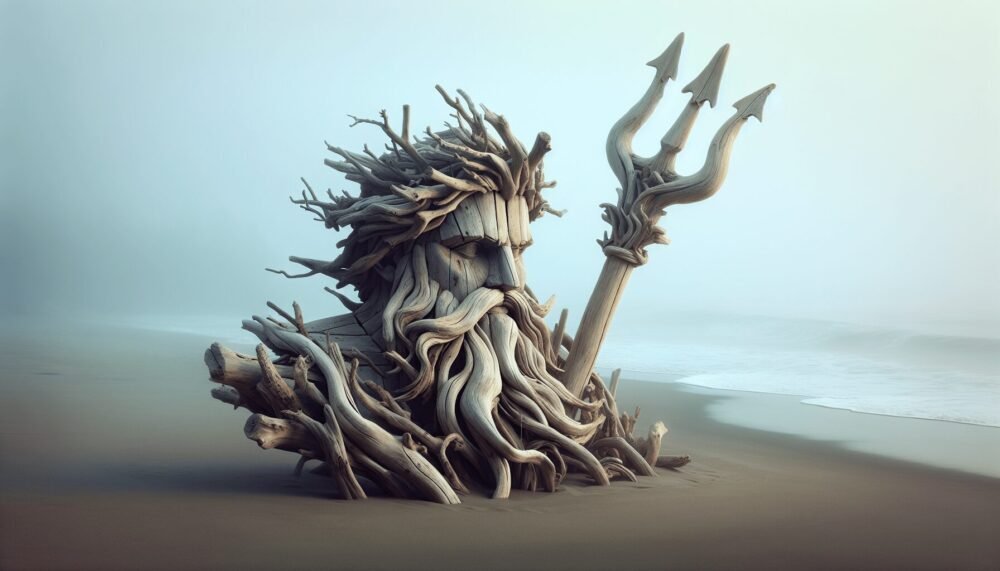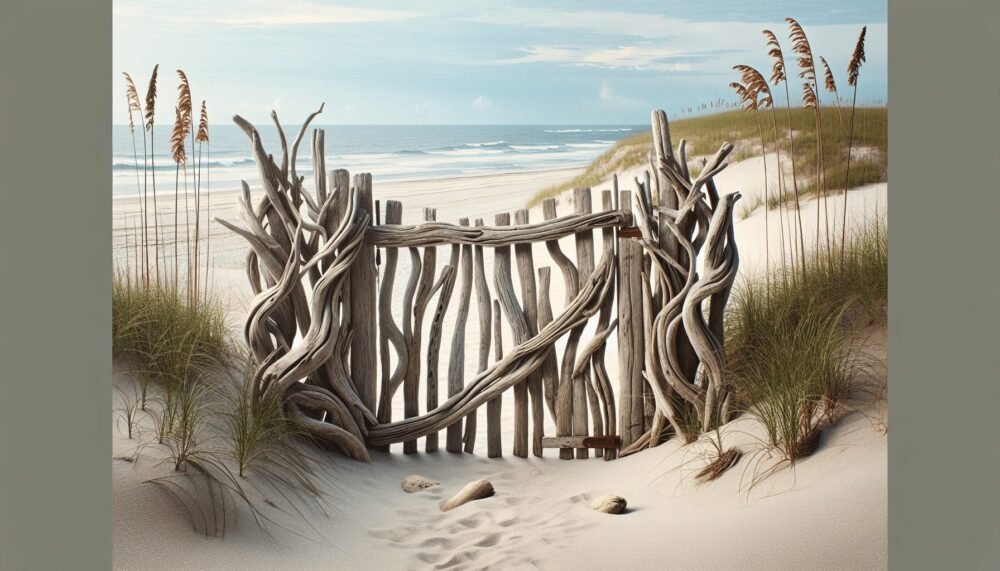Have you ever wondered what it takes to transform ordinary driftwood into an extraordinary work of art? Driftwood sculptures are a fascinating form of contemporary art that blend natural beauty with artistic skill. Among the popular themes artists often explore, the Driftwood Highland Cow stands out as an eye-catching and imaginative piece that combines rustic charm with artistic brilliance. Let’s embark on an informative journey to understand how such a unique creation comes into being and why it captivates so many of us.

Understanding Driftwood
Driftwood refers to pieces of wood that have been washed onto the shore by the action of winds, tides, or waves. Having often traveled long distances, it carries the character and history of its journey, providing an ideal medium for artistic expression.
Origins of Driftwood
The wood’s journey might begin from a grounding in a forest or from trees exposed on riverbanks, swept by a torrent into larger bodies of water. As it travels, the water’s abrasive forces smoothen and wear down the bark and edges, leaving behind intriguing shapes and textures. This weathering process also removes pollutants, resulting in natural, eco-friendly material.
Collecting Driftwood
Collecting driftwood for art involves scouring shorelines, riverbanks, or beaches for suitable pieces. Artists select driftwood based on its size, shape, and possible adaptations to fit their creative ideas. However, legality and environmental impact are important; some locations have regulations regarding driftwood collection to protect ecological systems.
The Unique Appeal of Highland Cows
Highland cows, with their distinctive long horns and shaggy coats, are magnificent creatures that evoke both strength and gentleness. Originating from the Highlands of Scotland, these animals are celebrated for their resilience and enigmatic beauty.
Characteristics of Highland Cows
Highland cows are known for their long, wavy coats that protect them from harsh weather. Their large horns make them easily recognizable and lend an element of regality to their stance. These features make them ideal subjects for driftwood sculptures, contributing to their popularity in this art form.
Symbolism and Cultural Significance
In Scottish culture, Highland cows are more than just cattle. They symbolize tradition and a deep connection to the land. Their portrayal in art reflects this cultural heritage and brings a piece of Scottish wilderness into our spaces.
The Art of Crafting a Driftwood Highland Cow
Creating a driftwood Highland cow involves vision, skill, and patience. This process is an art in itself, combining the natural world with human creativity.
Conceptualizing the Design
The artist begins by envisioning what the final piece should convey. The design usually captures the essence of a Highland cow, translating its lifelike features into an abstract interpretation using driftwood. This stage also involves planning the size and placement of the sculpture, whether it will serve as an indoor centerpiece or an outdoor installation.
Choosing the Right Driftwood Pieces
Each piece of driftwood has unique characteristics. Finding pieces that replicate the features of a Highland cow—such as its head, body, and horns—is essential. Artists must have a keen eye for selecting driftwood that not only matches the planned design but also retains the organic beauty inherent in its form.
Assembling the Sculpture
Assembling a driftwood sculpture is much like solving a complex puzzle. Pieces must be connected without losing their individual character. This involves careful cutting, fitting, and sometimes reinforcing certain areas with hidden supports or adhesives. The goal is to maintain as much natural integrity as possible, ensuring the sculpture remains robust and stable.
Techniques in Joining
While some artists prefer traditional joinery techniques like doweling, others might opt for modern adhesives or screws that offer strength and durability. The choice depends on the desired finish and the sculpture’s anticipated exposure to environmental conditions.
Final Touches and Preservation
Once the structure is complete, the artist may decide to add subtle enhancements such as oils or finishes to protect the wood and bring out its natural grain. Preservation is crucial, especially if the piece is displayed outdoors. Protective coatings help resist weathering, ensuring the sculpture maintains its beauty over time.
Driftwood Highland Cow as a Decor Element
Beyond the craft, these sculptures serve as stunning additions to a variety of settings, bringing the rawness of nature coupled with artistic craftsmanship into your environment.
Interior Spaces
Incorporating a driftwood Highland cow into your home can create a rustic yet sophisticated atmosphere. Its earthy appeal harmonizes with a variety of interior design styles, whether it’s modern minimalism, cozy farmhouse, or eclectic bohemian.
Outdoor Installations
A driftwood Highland cow can serve as a focal point in gardens, on lawns, or near water features. Its natural materials resonate with outdoor settings, making it a perfect installation for eco-friendly landscapes.

The Environmental Impact
Sustainability is a growing concern among artists and collectors alike. Driftwood art, when done responsibly, can be an exemplary practice of eco-conscious creativity.
Benefits of Driftwood Art
Using driftwood promotes recycling and reduces reliance on synthetic materials. Since driftwood is a naturally occurring, biodegradable material, it minimizes environmental impact, supporting ecosystem health when sourced responsibly.
Responsible Sourcing
To maintain ecological balance, artists should practice responsible sourcing by ensuring driftwood is collected in harmony with nature conservation principles. This involves understanding local regulations and assessing the ecological implications of removing driftwood from certain areas.
Appreciating Driftwood Highland Cow Art
Owning or viewing a driftwood Highland cow sculpture allows you to appreciate the harmony between man-made art and the earth’s natural offerings. It is both a testament to human ingenuity and a celebration of nature’s elegance.
Investment in Art
Art enthusiasts and collectors may view these sculptures as valuable investments. The uniqueness of each piece, combined with the skill involved in its creation, can lead to appreciation over time, both aesthetically and monetarily.
Cultural Appreciation
For those interested in cultural art, these sculptures offer a tangible connection to Scottish heritage and history. They act as cultural ambassadors, presenting snippets of Scotland’s rich pastoral landscapes through art.
The Revival of Driftwood Art
Driftwood art, once a niche practice, is gaining recognition and admiration across the globe. Its natural appeal and sustainable nature speak to contemporary tastes and environmental consciousness.
Trends in Modern Art
Modern art trends increasingly prioritize sustainability, and driftwood art fits seamlessly into this paradigm. As more artists experiment with eco-friendly materials, the popularity of driftwood sculptures continues to rise.
Driftwood Art Communities
Online platforms and workshops offer aspiring artists opportunities to learn and showcase their work. Communities encourage sharing of techniques and inspirations, fostering a sense of belonging and mutual growth.
Crafting Your Driftwood Masterpiece
If you’re inspired to create your driftwood Highland cow, it begins with collecting your materials and setting your artistic vision. Remember, the most important aspect is to enjoy the process and allow your creativity to flow naturally.
Getting Started
Research local shorelines or contact local environmental groups to understand the best practices for driftwood collection. Aim to maintain an eco-friendly approach by ensuring your collection activities do not disrupt local wildlife or ecosystems.
Experimenting and Learning
Even if your initial attempts don’t match professional standards, each piece you create builds your skills and artistic voice. Embrace the imperfections and distinctive character that driftwood offers.
Conclusion
The driftwood Highland cow is more than just an art piece; it’s a celebration of craftsmanship and nature’s beauty. With a piece like this, you can bring a touch of the Scottish Highlands into your space, surrounded by the history each driftwood piece carries. Enjoy the fusion of art and ecology, and consider creating or acquiring your own driftwood sculpture to appreciate its allure and significance personally.
















